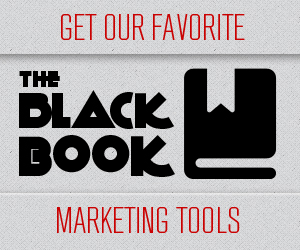Engage Your Customer in the Right Channel
Online marketing has a vast audience with a limited attention span. Social media is a terrific way to introduce your product but the real work comes with engaging your audience in the conversation. Product launches typically include media, PR, contests and a rush to get the most number of Facebook likes. And then interest dies down as brands move on to the next big launch.
People that spend a lot of free time online are picky about the sites they visit, the messages they read and the brands they want to share. If you can get people to like you on Facebook and tweet about you on Twitter, then you are off to a lukewarm start. The majority of people that become Facebook fans on brand pages rarely return to that page. Why? Because brands don’t reach out to them and they are soon forgotten.
While some companies have million-dollar budgets for brand kick offs, they may not have enough steam to keep the message going. This is where a company must rely on its fan base. If you engage them in the conversation and encourage them to provide feedback they may become brand champions. Every brand needs a champion.
Twitter is a fine way to push messages to customers. The problem with twitter is the speed and spontaneity of postings. Unless your customers spend hours absorbed in the twitter feed every day, the likelihood of them missing your posts is very high. Integrating Facebook and twitter is a matter of a few easy mouse clicks, but doesn’t mean it is a good idea.
Each marketing channel provides a unique opportunity to reach fans in a different way. Linking Facebook posts to your twitter account comes across as spammy, and fans may see the same message in both channels and wonder why you don’t try harder. They may see it as a lazy messaging and wonder why the noise died down.
Facebook ads are annoying in the space that people consider social. They don’t want flashing billboards. Mark Zuckerberg has figured out how to market to each Facebook user according to the type of pages they have taken the time to like.
People want to spend time with people, not advertising. Marketing in the 21st century must adapt to the new technologies both online and mobile. It is important to be aware of the applications your clients download to their smart phone, and it is important to know how to capitalize in these areas.
Pinterest is a two-year old social media website with a twist. To participate in this online environment requires an invitation. Whoever came up with that idea is brilliant. The value of an invitation automatically increases interest in an event. Oh, and Pinterest will make you wait a week or so before they accept you. Just know that this drives women crazy! Women want to get involved and see what it’s all about, and women are the mainstay of the Pinterest population.
Pinterest is an online photo-sharing site and is one of the fastest growing social media sites in history. It is currently number three on the list of popular social sites. Pinterest has provided a new outlet for brands with an online presence. Pinterest users drive traffic to web sites, blogs, product pages and they want to engage with brands by interacting with them.
Pinterest users can post photos or repin photos from anyone else that is registered, and post comments. Users can connect with each other, similar to twitter. One of the most interesting features of Pinterest is the ability to create boards. Each board can be a category of similar things and becomes a photo album of favorite things. Boards can focus on food, fitness, fashion, celebrities, cars, fantasy vacations or anything else a pinner may love.
Love really is the right word when it comes to Pinterest users. They love sharing their favorite things with other users. Some users link to their blogs and use Pinterest as a traffic driver to their website. Users can also share their pins on Facebook. Pinterest differs from Facebook and twitter because users don’t have to keep up with conversations and news feeds. Pinterest users spend an average of 89 minutes per month on Pinterest and those with smart phones can pin anything from anywhere. The app is very user friendly and allows users to stay engaged.



